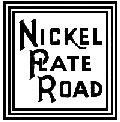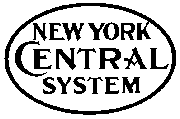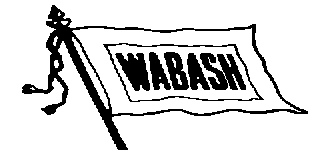|
|
|
|
|
|
|
|

The Pennsy mainline through Ft. Wayne was a busy thoroughfare right
up through Conrail in 1976. After Conrail Day freight traffic slowly
began to be shifted northward onto the New York Central route through Kendallville
and Waterloo. By the early 1980's Conrail started trimming down the
entire line west of Crestline, Ohio and by 1986 it was all converted to
single-track and passing sidings. At that time only a few local freights
and Amtrak were the only things running on it. In the late 1980's
Conrail decided to not keep the line up to passenger specs west of Crestline
and Amtrak was finally forced to pull out of Fort Wayne in 1990.
Norfolk Southern purchased the line west of Fort Wayne in 1994 and named
it the Fort Wayne District. They also bought the GR&I
north of Junction at that time. Conrail kept the mainline east of
Fort Wayne as well as the Decatur Branch, but they sold the entire western
end of Piqua Yard to Triple Crown. The east end of Piqua Yard was
kept for staging the local freights and for use as a small crew base.
The 1999 Conrail split-up gave the Pennsy mainline and the Decatur Branch
to CSX. They operated the line for over 5 years before leasing both
lines to RailAmerica in August 2004.
| St. Mary's River to Broadway St. | 80 KB |
| Broadway St. to Clinton St. (Baker St. Station area) | 137 KB |
| Clinton St. to Gay St. (and Mike Interlocking) | 89 KB |
| Conrail Schedule (front) | 91 KB |
| Conrail Schedule (back) | 93 KB |


| The following was sent to me on October 23, 2002 from Mark
Gallmeier who used to live next to this track. Thanks, Mark!
I lived in a house on the NYC Auburn line on Westbrook Dr. from 0 to
18. I spent MANY hours playing on that line.
From 4th Street up to Northrop the rail spur customers I remember are: 1. The NYC freight depot at Clinton and 4th, of course.
This was mostly an LCL facility. (bldg still exists)
The line crossed West Jacobs St. at grade. Flashers but no gates. 6. Valspar Paint located between Edgehill and Cass Streets on West Jacobs had a spur. Across the tracks diagonnally from the Telco. (Valspar still there) The line crossed West State St. on a plate girder bridge with a ballasted deck (now removed). 7. Just north of State Street at the corner of West State and Cass there used to be a lumber yard with a spur. Just north of this off Cass St. there was a gravel facility in the 1960s that also had a spur line. (Both gone) The line then crossed Spy Run Creek on a plate girder with open timber top. Paralleling that bridge is an ancient concrete bridge, nearly hidden by brush and trees now. My dad told me that was an interurban bridge for the interurban line that paralleled the NYC trackage along there. They went out of service in the 30s I think. (Bridges still there in 2000) 8. Roethele's Lumber was the next customer, just north of Spy Run Creek. To reach them by auto you'd go up Wells Street. Still in biz I think). |


Fort Wayne Navigation Menu:
|
Operations Locations & Interlockings Frequencies Historical Aspects Norfolk Southern's New Route Hotbox Detectors Train Stations |
![]()
© Original Content Copyright 1999-2007
David Safdy
© Design and Updates Copyright 2005-2007
Greg Lavoie
Contacts
Disclaimer